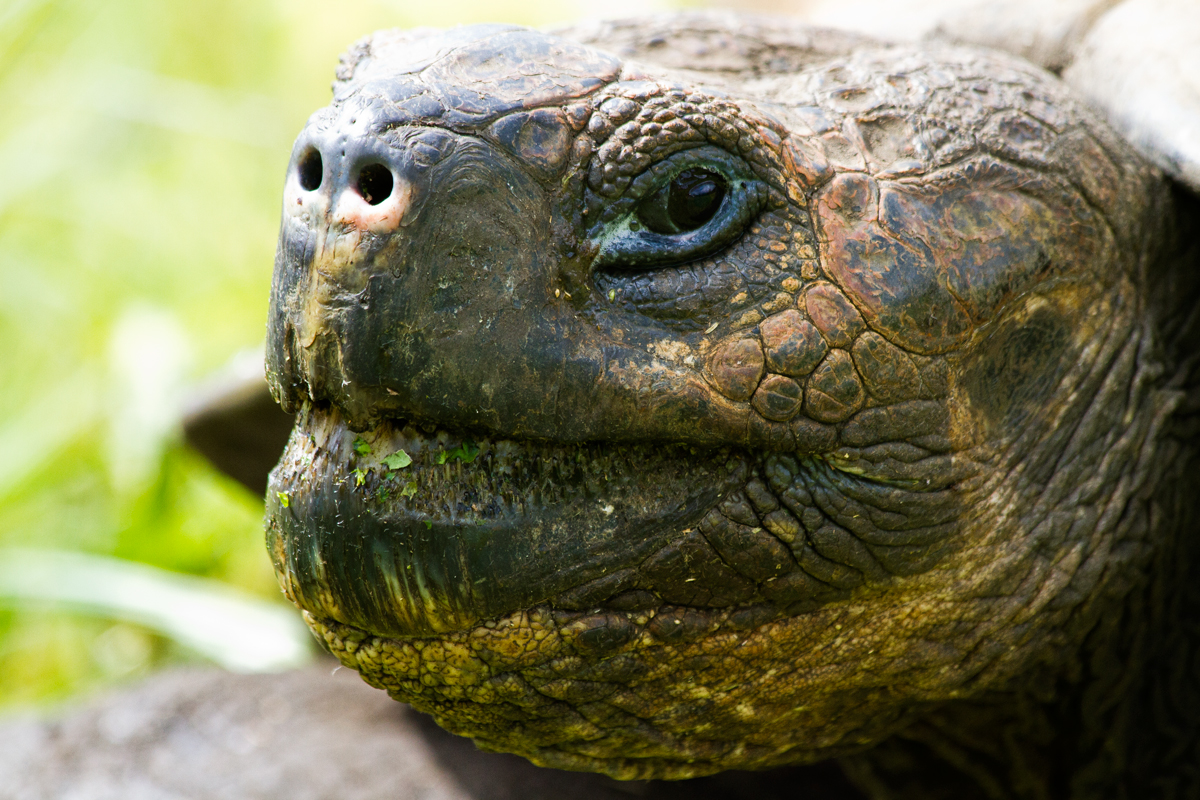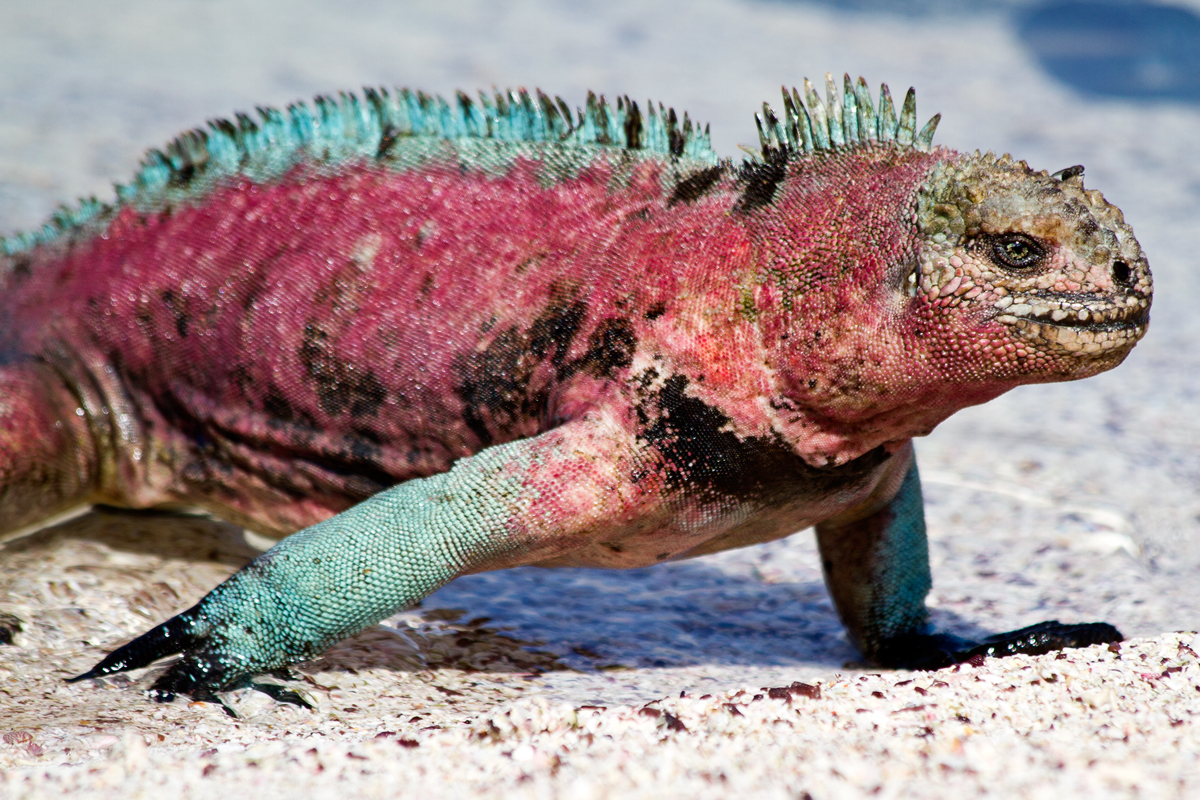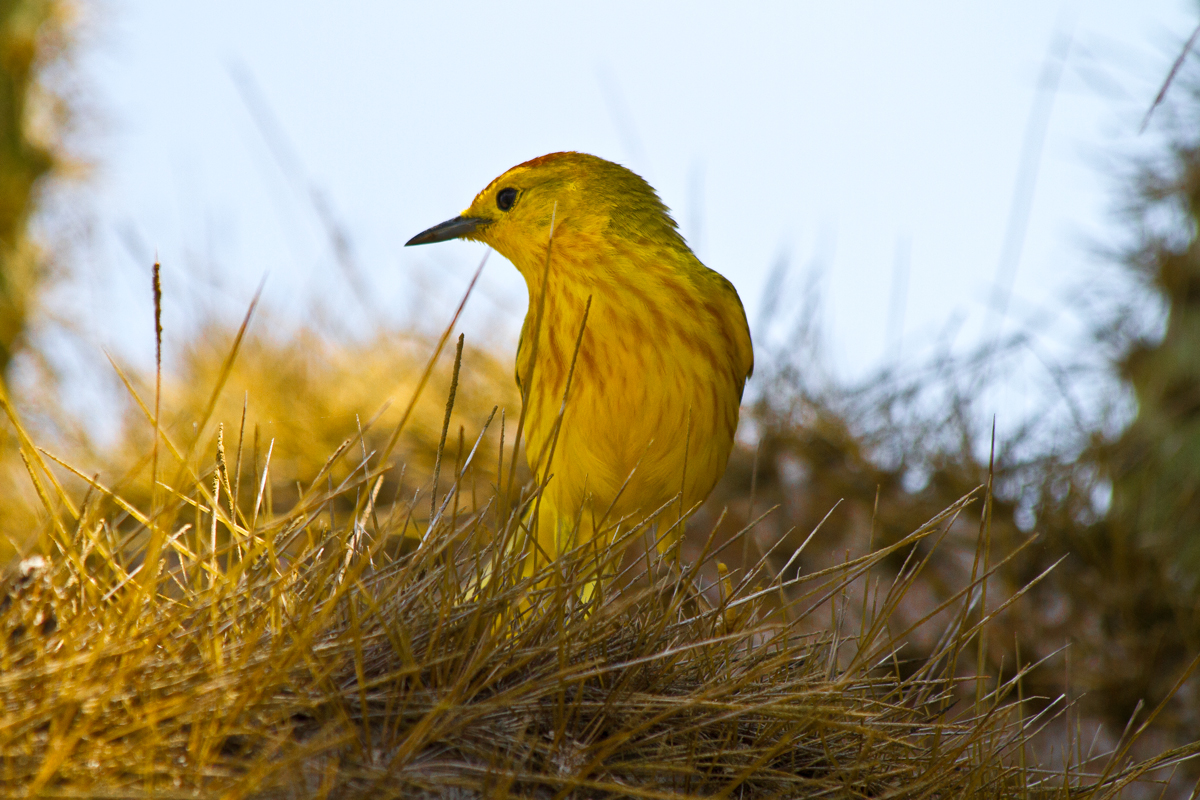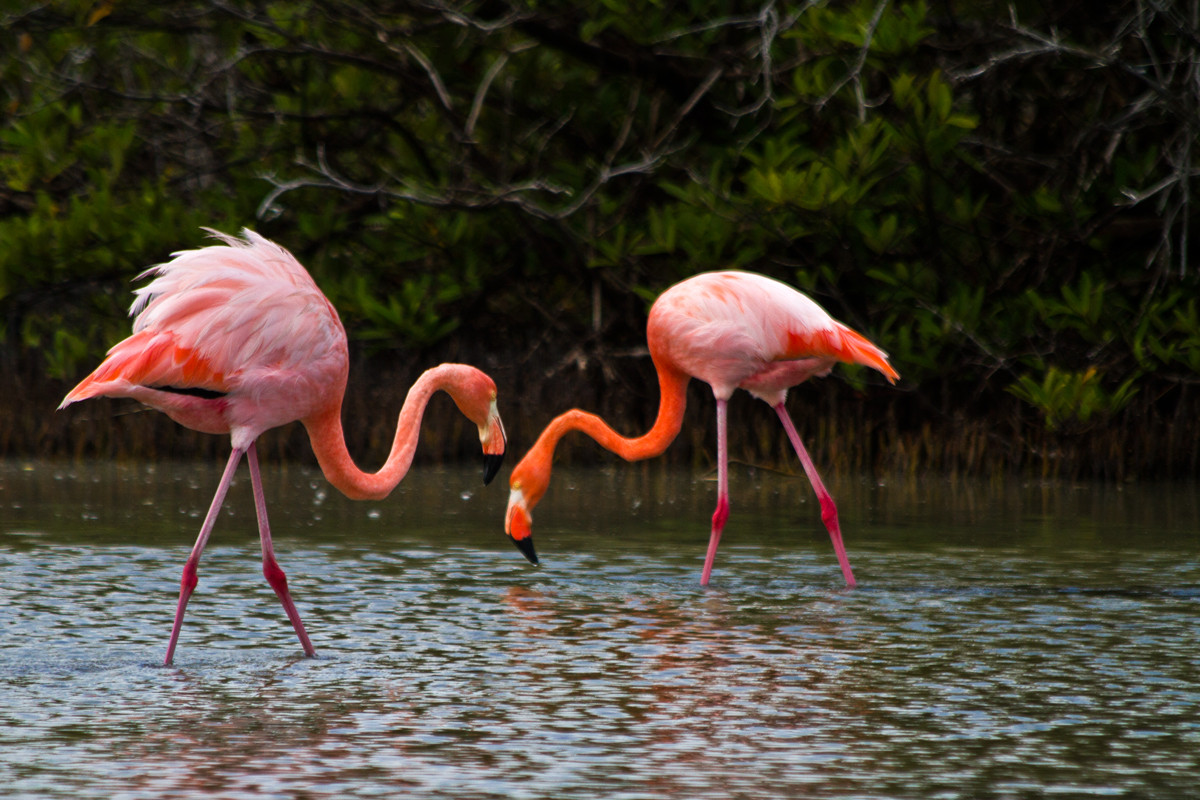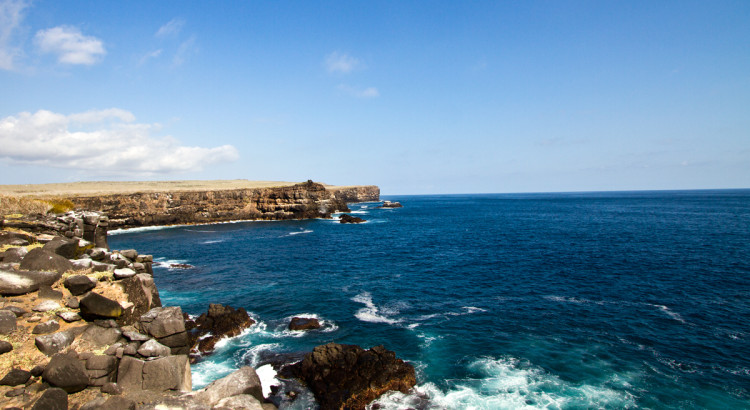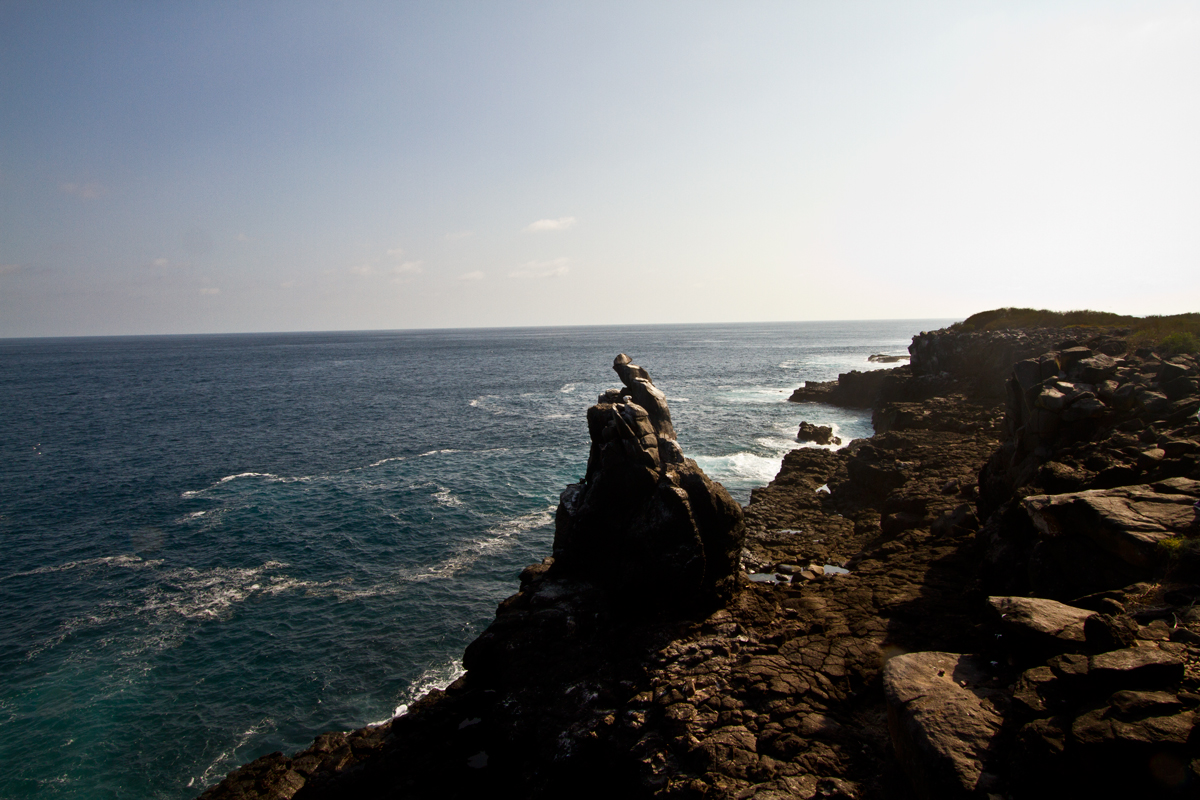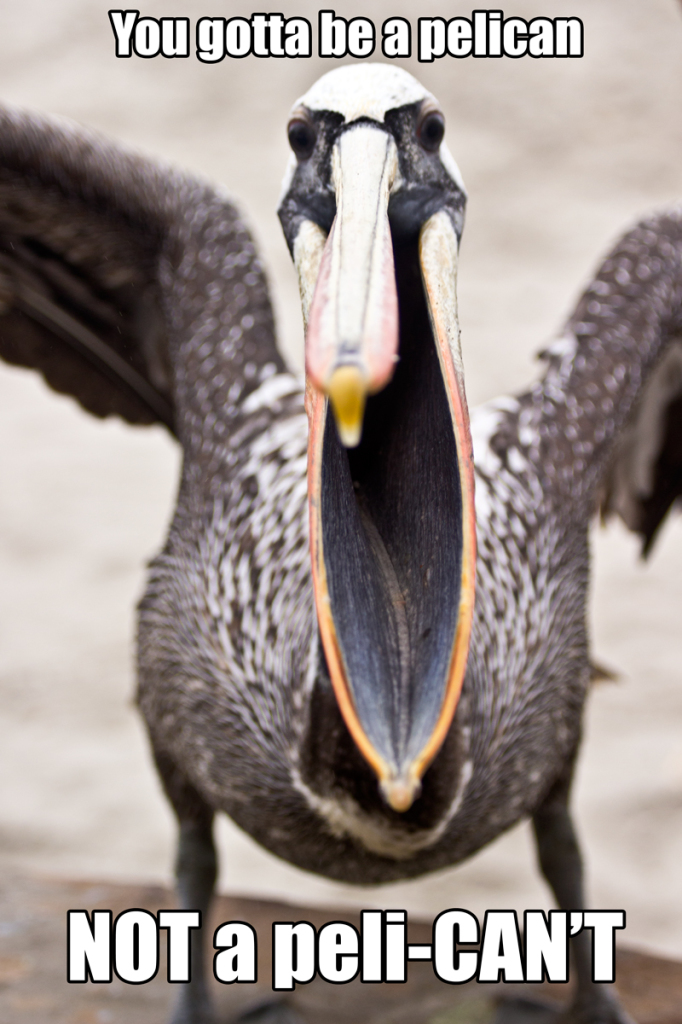If you’re hoping for gorgeous beaches and landscapes, the Galapagos Islands can’t compare to, say, Hawaii. Go to the Galapagos for the wildlife. You’ll see species there that aren’t living anywhere else. It’s absolutely incredible.
Here’s a rough guide of where you can spot specific animals. Of course, there’s no guarantee! And please note that it’s easier to see animals in the dry season. (Although we went in March and only had one, light sprinkle.)
NOTE: There are several islands you can’t visit without a cruise. The national park service is very stingy with permits, and for good reason—they have to protect the animals. As of March 2015, I know (100 percent certain!) you can take day trips to San Cristobal, Santa Cruz, Isabela, Floreana, Bartolome, South Plaza, Santa Fe and North Seymour.
Which places in the Galapagos Islands are best for seeing wildlife?
According to a study from 2014, there are six blue-footed boobie nesting sites in the Galapagos.
- Ferdinandia (Daphne)
- Isabela (Punta Roca)
- North Seymour
- Santa Cruz (Playa Perros)
- Espanola (Punta Suarez)
- San Cristobal (Punta Pitt)
Our guide highly recommended North Seymour, and we did see a good number of boobies walking around with that adorable deer-in-the-headlights look forever plastered to their li’l faces!
Skip the Charles Darwin Research Center on Santa Cruz. (ProTip: It’s open from 7:30 a.m.-12:30 and 2 p.m.-5) It’s not very interesting unless you want to see baby tortoises. Even then, the whole thing will take you about an hour, maybe two if you savor every. single. minute. (ProTip: Bring an umbrella and lots of water because the sun is unbearably hot, there’s little shade, and the center is a decent walk from town. Luckily, there are bathrooms evening spaced throughout the trails.) Instead, I’d recommend taking a cab to El Chato where you can get up close and personal (stay 1 meter away!) from the GIANT tortoises that roam all over a farmer’s property. For a reasonable fee, you can take your time, wander the paths and hang out with tortoises—which generally ignore you as they go about their day. The place also has a little cafe, gift shop (of course!) and decent restrooms.
It’s difficult to pick a favorite when you’re in the Galapagos, but the iguanas definitely come close to my No. 1. I loved their unique coloring and intricate scales—such gorgeous creatures. You’ll see iguanas everywhere, but I was most interested in the endemic species—species not found anywhere else in the world—on Santiago and Santa Fe.
If you don’t have time for too many day trips and haven’t had your fill of iguanas, you can see some of the marine reptiles at the beaches on Tortuga Bay Reserve, Santa Cruz. (ProTip: You can walk there from town. Bring plenty of water and an umbrella for the sun. Start walking to the beach as early as possible. It gets unbearably hot around 10 a.m.)
Penguins
We saw pretty amazing video of penguins from Isabela and Bartolome. #somuchadorable
Frigates
These dudes are a sight to see! They show off their red pouches all year long, but inflate them only for mating season, which is March and April. The best, easiest way to see the colorful beachballs hanging from their necks is to visit North Seymour.
You’ll see lava lizards all over the place—each more brilliantly colored than the next!
Ditto.
These aren’t your average garden variety turtle. We spotted some the size of grown men. If you can get to Black Turtle Cove (Santa Cruz) early, early morning before the sun rises, you’ll see them swimming out of the mangrove and into the ocean. (ProTip: Bring 100% DEET mosquito repellent and wear long sleeves.) Snorkeling around Kicker Rock in San Cristobal is a great way to get close to these majestic denizens of the sea.
We saw sharks almost every time we got in the water. If you’re not keen on snorkeling but still want to see sharks and rays check out the Tortuga Bay Reserve on Santa Cruz. It has a two lovely beaches: walk past the first one to the second, and that’s where you’ll see (and can swim with!) sharks and rays. (ProTip: You can walk there from town. Bring plenty of water and an umbrella for the sun. Start walking to the beach as early as possible. It gets unbearably hot around 10 a.m.)
Albatross
Espanola is the only place in the ENTIRE world where you can see the waved albatross. We explored the island in March and missed the birds. The return home to nest between April and December, although our guide said they’ve been hanging out on the island later and later each year. I’ve heard that seeing these birds up-close is worth the trip to the Galapagos alone. Waved albatross mate for life. When they return home to meet their partners, they participate in this intricate dance—almost like a secret handshake. It’s said that the sound of hundreds of these birds all ritualizing at the same time sounds like a huge sword fight!
Most islands have their own version of finch, which have evolved to fit the specific conditions of their habitat. *cue science nerdout
Flamingos
According to the Significant Other, “a day trip to Isabela is probably your best bet to see flamingos.” Although we did see a handful at Las Bachas, Santa Cruz, which is one of the stops during a day trip to North Seymour.
As a native Californian, I wasn’t too interested in sea lions. We have oodles of these animals all up and down our coast. BUT California sea lions are nowhere near as amazing as Galapagos sea lions. The Galapagos sea lions spend their lives in utter happiness. I’m not one to put human emotions on animals, but they just seemed so ridiculously blissed out ALL the time that it’s mesmerizing. Watching them play in the water and loll about on the sand is such a feel-good experience. We went in March and got to see quite a few pups, which are VERY curious about humans. These li’l guys are wont to walk up and investigate the strange aliens in their homes. You’re supposed to stay 1 meter away from the pups at all times at 5 meters away from the males (very territorial, very intimidating), but this is plenty close to get good photos!
San Cristobal has tons of sea lions. You don’t even need to leave the town center to see them—they’re known to hang out on park benches and chill in planters. However, you’re sure to spot sea lions no matter where you go—they’re all over!

